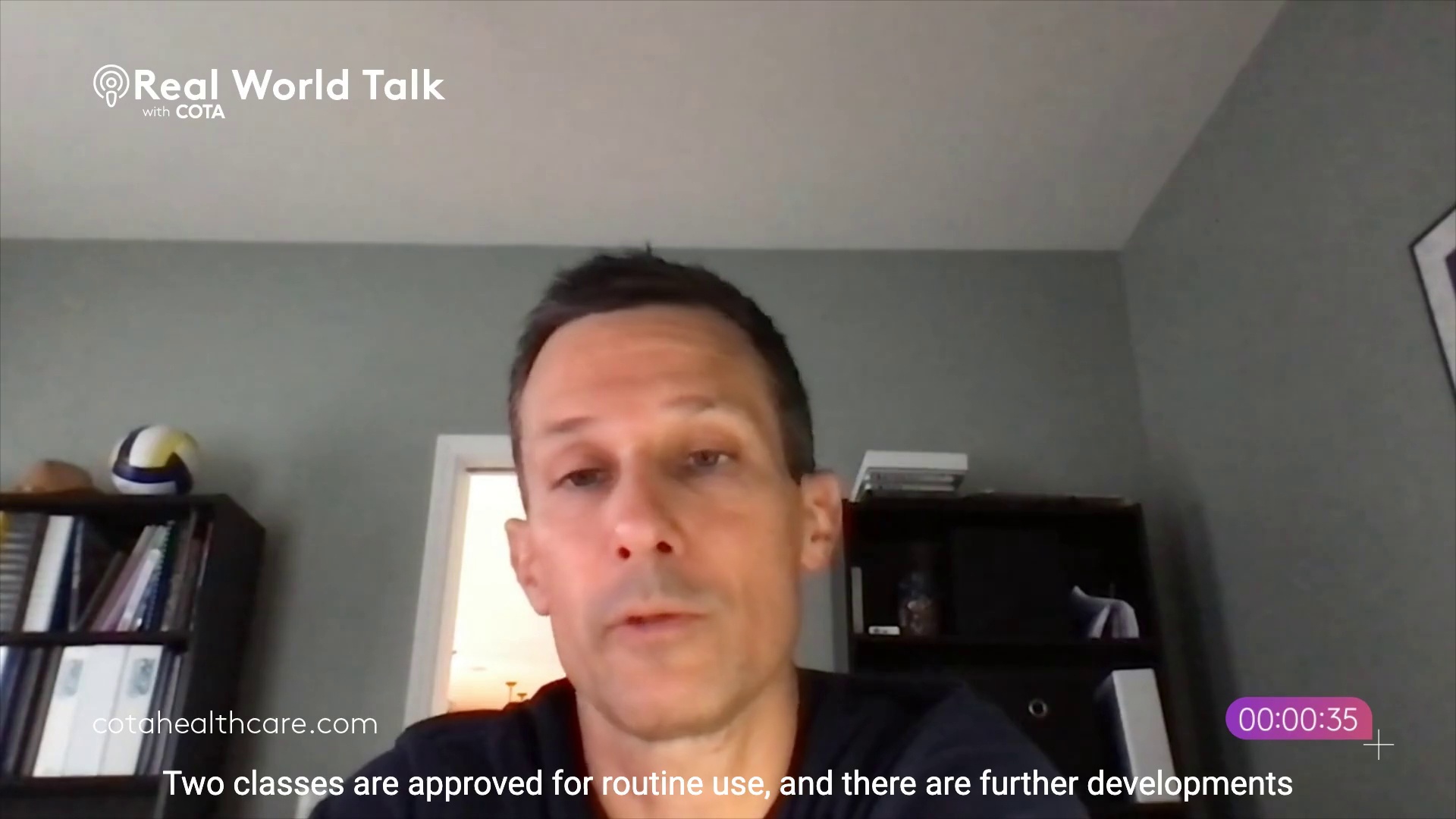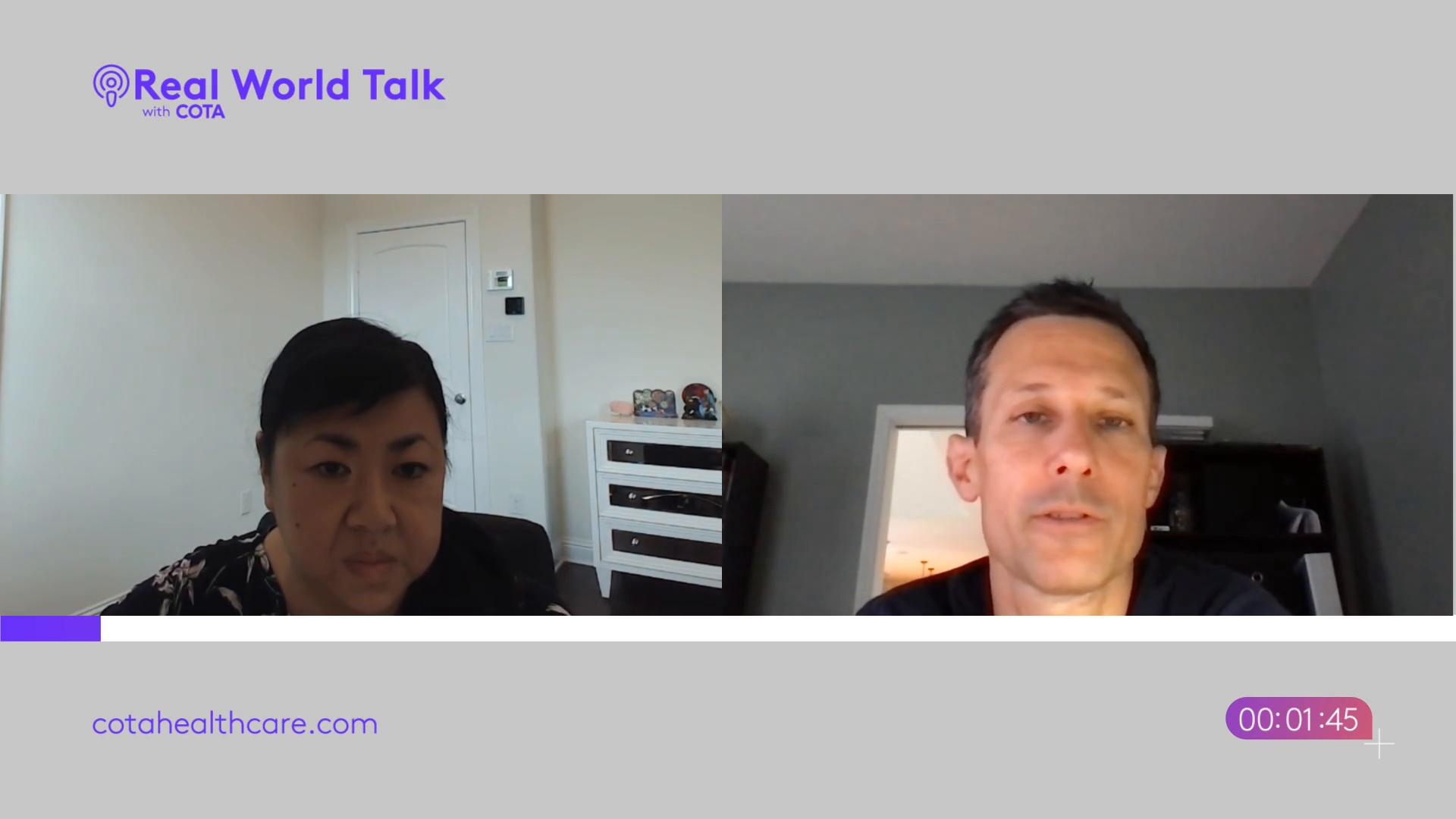Using Real-World Data in Blood Cancer Research with Paul Barr, MD

Subscribe on your favorite platform:
Summary
Blood cancers make up more than 100 different diagnoses in the current classification system. And there are three main groups of blood cancer: leukemia, lymphoma, and myeloma.
One of the most common leukemias in adults is chronic lymphocytic leukemia (CLL). In this episode of Real World Talk, our host Ming He welcomes Paul Barr, MD, the medical director of the Clinical Trials Office of the Wilmot Cancer Institute. They talk about the importance of Blood Cancer Awareness Month, the development of CLL treatments, and the potential use of real-world data in blood cancer research.
Highlights
- [00:09] Introduction — Our host Ming He, MD, welcomes Paul Barr, MD, an associate professor of medicine. He is the director of clinical trials at the Wilmot Cancer Institute at the University of Rochester Medical Center.
- [01:08] Discussing Blood Cancer Awareness Month — Blood Cancer Awareness Month is meant to support blood cancer patients and spread awareness about this disease. Paul explains, “Blood cancers make up more than a hundred different diagnoses in the current classification system. And the more we learn, the more we keep trying to precisely define these different entities.”
- [04:51] How to help blood cancer patients — Ming He explains how you can support blood cancer research. The easiest way is to donate blood.
- [07:10] CLL is a common type of blood cancer — Paul specializes in CLL. He says, “It often has a slow natural history. So what that means is that patients may live with this disease for a long period of time. And there are some estimates that say that there are about 200,000 Americans living right now with CLL. Generally, it’s relatively treatable compared to a lot of other malignancies. And again, because of this, patients can live for a long time.”
- [10:32] The development of CLL treatments — There have been quite a few developments when it comes to CLL treatments. Paul explains, “We now have a much better understanding of the molecular drivers of the disease. We can risk-stratify patients based on a lot of the molecular aberrations that occur within leukemia cells, giving us a better idea of the patient’s prognosis and also helping us to direct our therapies. That’s pretty exciting.”
- [14:01] CAR T-cell therapy looks promising — According to Paul, CAR T-cell therapy is very promising, even though it’s still not approved. He says, “CAR T-cell therapy is one such strategy that’s not approved for CLL but looks very promising. CAR T-cell therapy, as I describe to patients, is like genetically modifying our immune cells to attack the cancer — true immunotherapy that is individualized for the patients who go through the process. And again, we use this all the time for some of the more aggressive lymphomas.”
- [14:27] The challenges with CAR T-cell therapy — Paul says, “The challenge with CLL is that the disease causes a certain amount of immune dysfunction. So CLL patients, by definition, are immunocompromised. The T-cells that we harness to modify and put back in the patient are not as functional as with other diseases. So for this reason, and a few others, it hasn’t been as successful in initial trials; only a minority of patients with CLL were responding to CAR T-cell therapy.”
- [18:10] The great potential of real-world data in blood cancer research — Paul says that real-world data is powerful because it helps us understand how we should use blood cancer treatments and how we should sequence and combine them to get the best possible outcome.
- [20:36] Real-world outcomes — Another benefit of using real-world data is getting real-world outcomes. Paul says, “In the real world, not every patient fits in these neat little categories. So you want to try to understand what your treatments are doing in the real world, where patients may not have perfect organ function, aren’t treated at specialized centers, and whatnot.”
- [24:11] Discussing the future of blood cancer — Paul finishes off the episode by saying, “I do think the cure will come in a one-size-fits-all model. However, I also think that we will have to use a variety of tools to address the different types and the different risk groups of the disease.”
Key Points
- The importance of Blood Cancer Awareness Month. There are many reasons why we need to raise awareness about blood cancers. First of all, it’s a way to support blood cancer patients. Secondly, these campaigns help raise necessary funds for research and accelerate its progress.
- Chronic lymphocytic leukemia is the most common type of blood cancer in adults. Paul explains why he decided to study CLL. He says, “I think what drew me into studying lymphomas and especially CLL is that when I first started my training in the early 2000s, we were just starting to develop some of the novel tools to treat this disease and being a clinical trialist at heart, my passion, really, was developing novel treatments. It was an area where we were just learning how to use some of these exciting new agents. So that drew me in one way. The ability to take care of patients over a long period of time and get to know them and their families was another draw.”
- There are a lot of potential uses of real-world data (RWD) in blood cancer research. According to Paul, there are a lot of potential uses of RWD in blood cancer research. He explains, “I’ll focus first on the novel treatments we develop just because, again, that’s where I focus. The gold standard for developing new agents and drugs are clinical trials, where we’re testing these agents in a very safe and controlled setting using a very homogenous group of patients, so to speak. So we closely monitor them to understand the toxicities, the outcomes, and the efficacy. However, you can’t test everything in clinical trials. They’re expensive, cumbersome, and difficult to run.”
